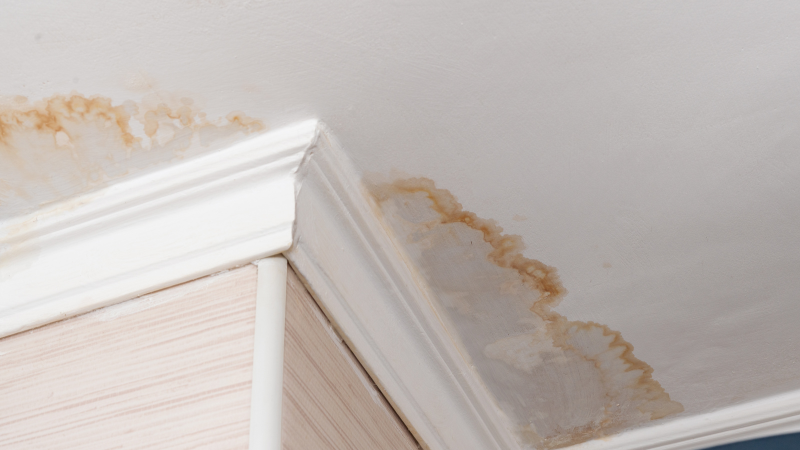Listed here down the page you can get lots of worthwhile help and advice relating to Preventing Water Damage in the Bathroom.

The shower room is very at risk for wet accumulation and potential water damage as a result of the constant use water in it. This article offers simple evaluation techniques to help spotting water damage risks.
The frequent use of water in the bathroom makes it extremely prone for damp build-up as well as prospective water damage. By examining it routinely, you can reduce water related problems.
The adhering to collection of assessments is simple to do and also need to be done as soon as in every 3 months in order to keep your restroom in good shape and to stop possible water problems triggered by the tub, the shower, pipe joints and plumbing, sinks, cupboards, and the toilet
Do not forget executing these evaluations and be thorough while doing them. Bear in mind that these simple inspections can conserve you a great deal of money by providing early indications for water damages
Sinks as well as Cabinets
Sinks and closets are revealed to wetness and moisture everyday and are often forgotten. Examine routinely under the sink as well as on the countertop above it. Fix any kind of drip in the trap as it might suggest drain troubles. Check out the sink, slow-moving draining pipelines might suggest a blocked drainpipe. Change sink seals if they are broken or loose.
Bathtub and also Shower
The shower and also bath tub need special attention and also upkeep. Inspect the tiles and change if split. Make certain that there is no missing grout in between the ceramic tiles. Examine and change split caulking at joints where the walls meet the flooring or the tub. Blocked drains and pipelines issues will protect against the tub from drying and also might indicate serious troubles below the bathtub. Speak with a professional quickly to avoid structural damages. Focus on discolorations or soft locations around the tub walls as they might indicate an inner leak.
Plumbing
Signs for water damages are tough to discover since a lot of pipes are set up inside the walls.
Pay unique attention to floor covering and wall surfaces wetness and also stains as they might show an undetectable plumbing problem. Inspect moisture degrees in adjoining spaces too.
The Bathroom
The commode is a prone water joint. Inspect the water lines and also search for leaks around the bathroom seat, in the hose, as well as under the water tank. If you discover any signs of moisture on the floor around the toilet, look for leakages in the toilet edge as well as storage tank seals.
Be aware that hanging commode dish antiperspirants boosts the possibilities for blockages.
Water Damage Signs In The Bathroom To Avoid Cleanup
Musty smell
This is one of the easiest signs to catch because musty smells are so odorous. The damp, earthy, moldy smell should be a big red flag. The smell will develop when moisture gets trapped in surfaces, and begins to facilitate mold growth. Leaking pipes under cabinets, inside walls, and behind shower fixtures will cause moisture to stay trapped and not dry, which will lead to mold growth and spread. As soon as you notice any musty smells in your bathroom, have it checked for hidden water damage and cleanup signs.
Visible mold
If the smell isn’t there to give it away, sometimes you will actually see mold growth. Finding mold in your bathroom is a serious problem, because mold is very harmful to your health. By the time mold growth is visible, it also means that water damage has already occurred and been present for some time. The only way the mold problem can be resolved is to find the source of the moisture and get it stopped. To safely and adequately remove mold, you need to have professionals handle the remediation. Do not waste any time in getting mold problems addressed, fixed, and sanitized so that you can protect you and your family from the many respiratory symptoms caused by mold exposure.
Damaged floors
Bathroom floors should be able to withstand some exposure to water while still remaining in good condition. However, when excess exposure or water leaks occur, they will begin to damage even the most water-resistant flooring. If you notice any cracking, bubbling, staining, or warping on your bathroom floors, there is probably a water leak somewhere causing the distortion. If you notice areas of the floor have become softer, or even have a spongy feeling, there is probably damage to the subfloor. Subflooring is typically made up of plywood. When plywood is exposed to water or moisture, it will absorb it. Once it has become saturated, the weight of the excess water will cause the wood to swell and soften. Check the floors in your bathroom frequently to catch any of these sings before they lead to damaged subflooring.
Changes on walls
When water leaks behind walls, it will cause changes in the drywall. Peeling plaster, blistering paint, and soggy wallpaper are all good indicators that excess water is building up behind the wall. Water leaking behind drywall will cause it to swell and be soft to the tough. If you start to notice gaps along the trim of your walls, or where tile meets the wall, it could also be a strong indicator that there is a leak behind the wall. Any changes, distortion, or damage on the walls should be evaluated as soon as you notice it to prevent further water damage and cleanup.

I found that content about Looking for Signs of Water Damage in the Bathroom when exploring the search engines. Remember to take a moment to share this blog if you enjoyed reading it. I am grateful for your time. Visit again soon.
Book Your Service